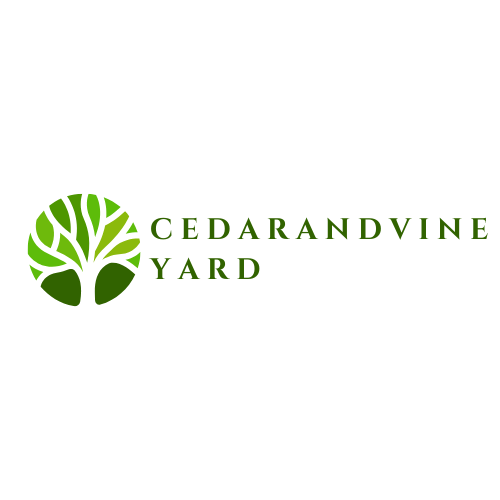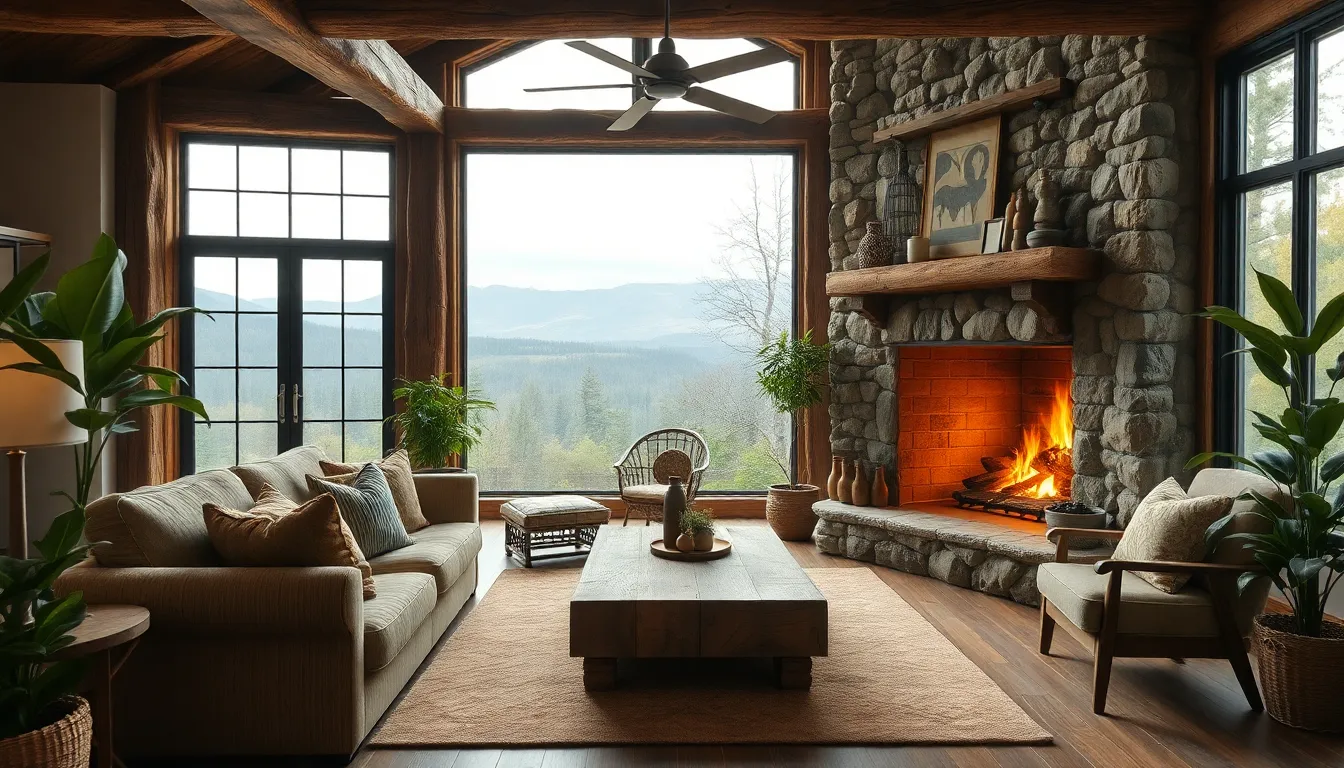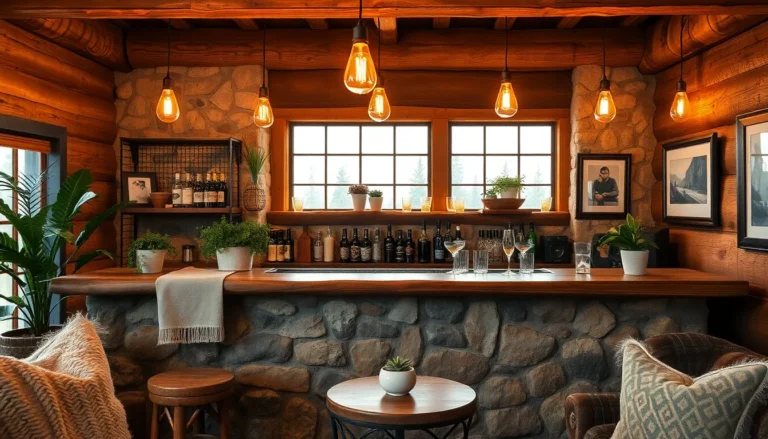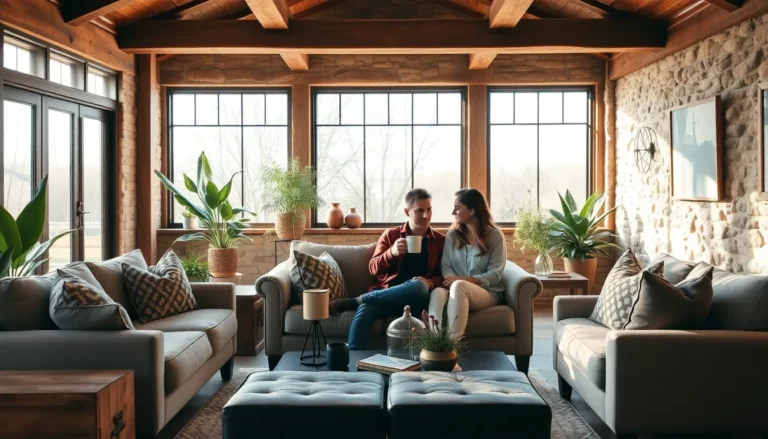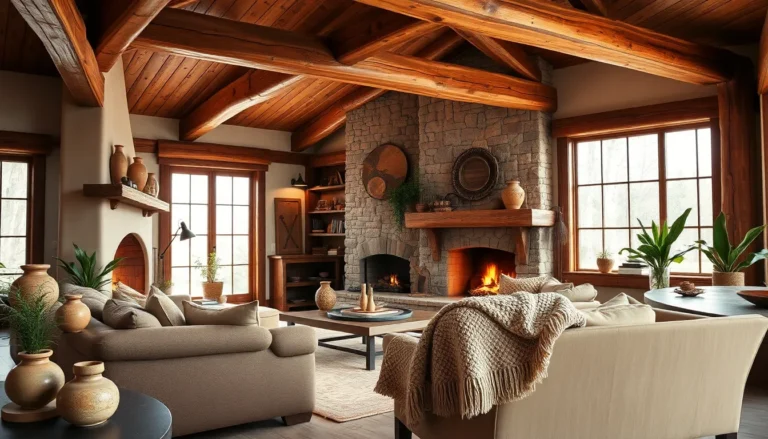Imagine stepping into a home that feels like a warm hug from Mother Nature herself. Rustic home design does just that, blending the charm of the countryside with modern comforts. It’s all about creating a cozy sanctuary where reclaimed wood beams and vintage accents come together to tell a story.
But don’t be fooled—rustic doesn’t mean outdated. With the right touches, it can be as chic as your favorite Instagram influencer’s feed. From earthy color palettes to handcrafted furniture, rustic design invites everyone to kick off their shoes and bask in the beauty of simplicity. So grab a cup of coffee, and let’s dive into the delightful world of rustic home design that’ll have you dreaming of log cabins and cozy nights by the fire.
rustic home design
Rustic home design captures a cozy atmosphere while harmonizing with nature. It combines countryside charm with contemporary elements to create inviting spaces.
Key Characteristics
Characterized by warmth and simplicity, rustic design features natural textures and organic forms. Natural wood beams, stone walls, and large fireplaces often emerge in these homes. Earthy color palettes dominate, with browns, greens, and soft neutrals creating a serene backdrop. Vintage accents like weathered furniture and handmade decor foster uniqueness. Homes evoke a sense of comfort and relaxation, inviting gatherings and connections among family and friends.
Materials Commonly Used
Commonly utilized materials enhance rustic aesthetics. Reclaimed wood frequently appears in flooring, cabinetry, and beams, providing warmth and history. Stone, whether in fireplaces or walls, adds texture and durability. Metal accents, especially wrought iron, introduce a rugged yet refined touch. Linens and natural fibers contribute to comfort, while neutral or earthy tones ensure balance. Each material harmonizes, reinforcing the theme of authenticity and craftsmanship found in rustic design.
Popular Rustic Home Design Styles
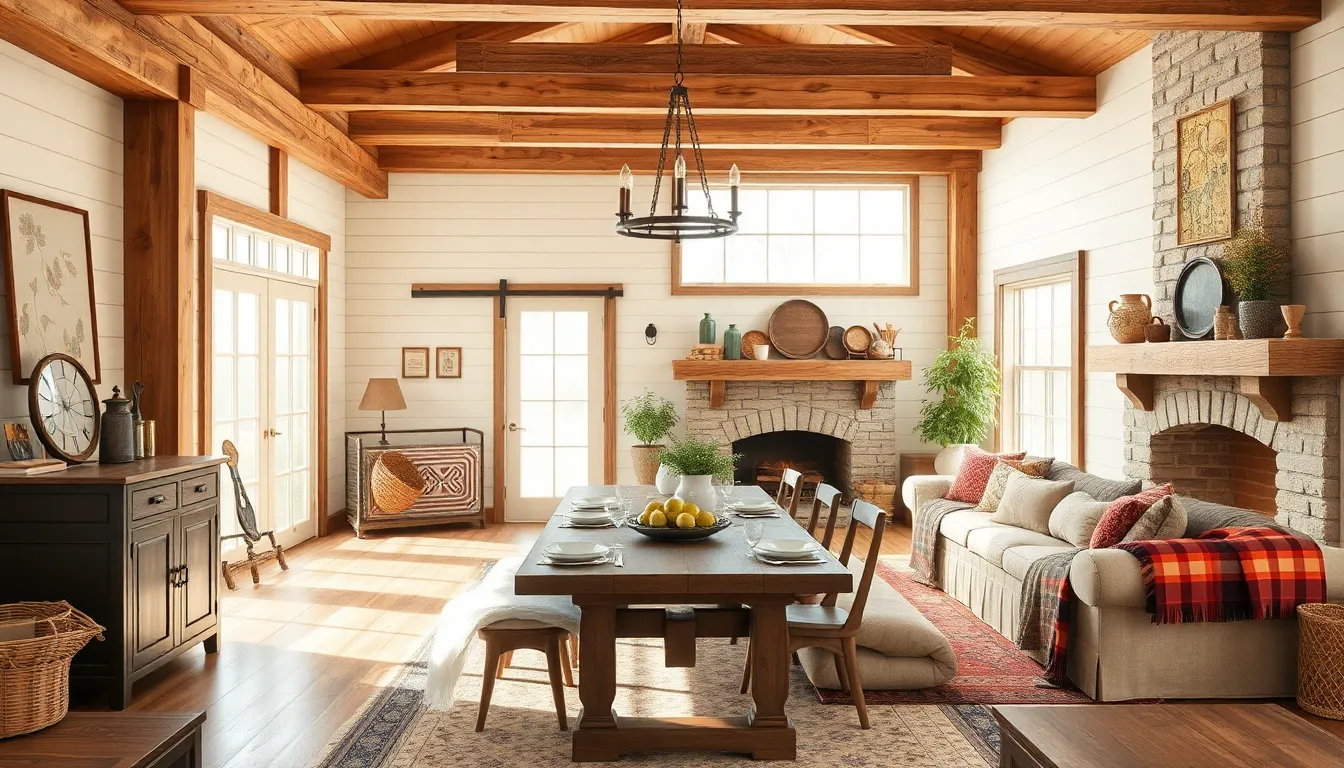
Rustic home design encompasses various styles that evoke a connection to nature and simplicity. Two popular styles include farmhouse and cabin, each offering unique characteristics.
Farmhouse Style
Farmhouse style emphasizes practicality and comfort. This design often incorporates large dining tables, perfect for family gatherings. Exposed wood beams, shiplap walls, and vintage decor create a welcoming ambiance. Soft, neutral colors dominate the palette, complemented by pops of vibrant hues in accessories. Furniture tends to feature worn finishes, enhancing the rustic charm. Farmhouse kitchens typically showcase open shelving and farmhouse sinks, inviting functionality with an aesthetic appeal. Handmade quilts and mason jars add personal touches throughout the space.
Cabin Style
Cabin style reflects a more rugged aesthetic, ideal for mountain retreats or lakeside escapes. Natural wood finishes dominate in this design, emphasizing warm tones and organic textures. Stone fireplaces serve as focal points, providing both warmth and character. Windows often feature expansive views, bringing the outdoors inside. Cozy furnishings, like oversized sofas and plaid throws, enhance comfort. Light fixtures made from wrought iron or branches emphasize the connection to nature. Rustic accents, including animal hides and wood carvings, contribute to the cabin’s earthy vibe.
Incorporating Rustic Elements
Rustic home design thrives on integrating natural and inviting elements. This approach enhances the cozy atmosphere characteristic of rustic aesthetics.
Furniture and Decor
Handcrafted furniture dominates rustic design, offering unique character. Pieces like reclaimed wood tables and vintage chairs serve as focal points. Natural fibers often appear in textiles—think linen curtains or wool throws. Accessories such as wrought iron candle holders and antique pottery enrich the decor. Mixing textures, like combining smooth wood with rough stone, adds depth to spaces. Artworks featuring landscapes or wildlife contribute to the natural feel. Choosing items with personal history can infuse warmth and narrative into the home.
Color Palettes
Rustic color palettes emphasize earth tones, creating a calm ambiance. Shades of brown, green, and warm neutrals dominate these schemes. Accents of muted colors, such as soft blues or burnt oranges, can offer contrast while maintaining cohesion. Walls often feature warm beige or soft gray for a serene backdrop. Combining these colors with natural materials enhances the overall aesthetic. The goal centers on achieving a harmonious environment that reflects nature’s beauty. Using colors that mirror the outdoors can foster a sense of tranquility indoors.
Benefits of Rustic Home Design
Rustic home design delivers numerous advantages that enhance both aesthetics and lifestyle. Its approach fosters an inviting and warm atmosphere.
Warmth and Comfort
Rustic design emphasizes a cozy feel through natural materials. Features like reclaimed wood and soft textiles create soothing environments. The use of large fireplaces adds warmth, making spaces welcoming for family gatherings. Characteristics such as rounded edges on furniture soften the overall look, inviting touch. Vintage accents contribute to the charm, instilling a sense of nostalgia. Comfortable seating arrangements further enhance the cozy ambiance. Overall, rustic design cultivates relaxation and encourages connection among residents.
Connection to Nature
Rustic home design highlights the beauty of natural elements. Incorporating materials like stone and wood establishes a direct link to the outdoors. Large windows invite natural light, creating a seamless indoor-outdoor experience. This connection fosters tranquility and promotes well-being. Earthy color palettes reflect the hues found in nature, enhancing the serene environment. A strong focus on handcrafted items celebrates artisanal craftsmanship, reinforcing authenticity. Nature-inspired artworks or decor elements can further bridge this connection. Ultimately, rustic design nurtures appreciation for the simplicity and beauty of the natural world.
Conclusion
Rustic home design offers a unique blend of comfort and style that resonates with those seeking a connection to nature. By embracing natural materials and earthy color palettes, it creates inviting spaces perfect for relaxation and gatherings. The charm of reclaimed wood and vintage accents tells a story that enriches the home environment.
Incorporating rustic elements fosters a sense of tranquility and well-being, making it an ideal choice for anyone looking to enhance their living space. This design style not only reflects personal taste but also nurtures an appreciation for simplicity and craftsmanship, ultimately transforming a house into a warm and welcoming home.
